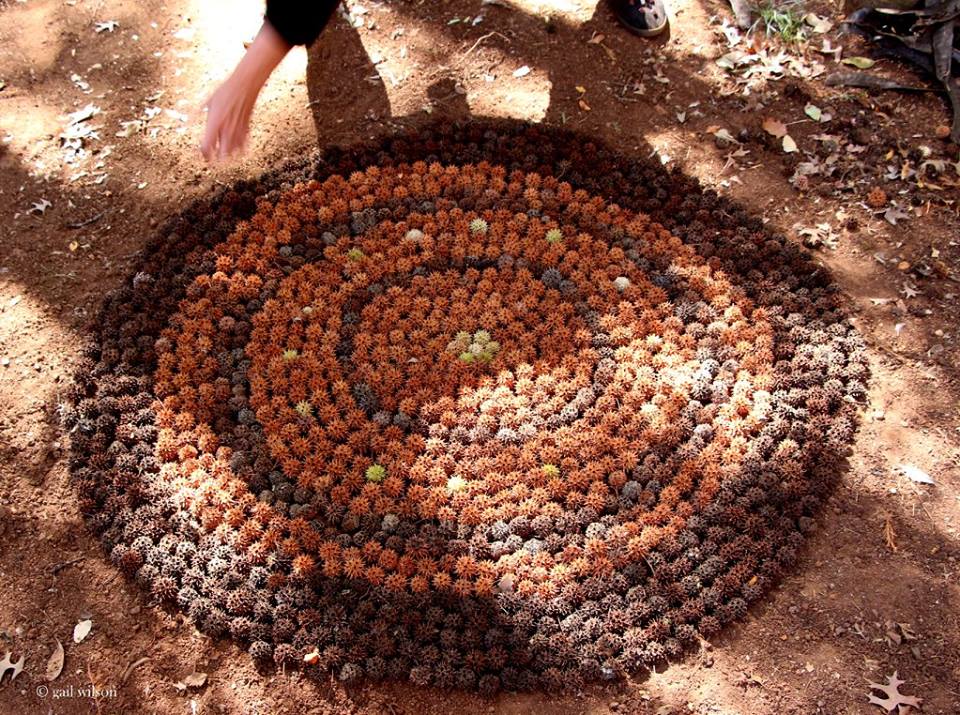“I went to the woods because I wanted to live deliberately. I wanted to live deep and suck out all the marrow of life. To put to rout all that was not life, and not, when I had come to die, discover that I had not lived” Henry David Thoreau
3 June 2018
Part Three
This part of the study in Drawing is about observational drawing and learning how to get to grips with drawing the world around you. My featured image for this part is a print by Bryan Nash Gill, Red Ash, 2007 . This is a cross-section of a 82 year old Ash tree and part of his book, Woodcut.
Project 1 Trees
The idea is to start with a focused study of trees. The project will help with practise in measuring, the use of negative and positive space, tone, perspective, etc. and also get to grips with the structure of a tree. The key approach to making any study of trees is simplification. Studying trees in the landscape will build your observational skills, develop your drawing techniques and compositions, and help you to select from what you see.
Exercise 1 Sketching individual trees
I visited a sheep and grain farm and spent sometime outside walking in the grain fields. This part of South Africa is sandy and near the coast. The plants of this area are fynbos and bushy shrubs. This area is unfortunately overtaken by alien trees, mostly from Australia and planted by early farming settlers.
It was wonderful to discover a pair of indigenous trees, Olive tree (Olea Europea, subspecies Africana)

I decided to make preliminary sketches for my study log of these intwined trees. It was raining the previous day but now it is a crisp bright day outside.
For the four preliminary drawings I need to focus on:
- draw a simple outline of the tree’s overall shape;
- draw basic shapes in outline, or shaded areas that describe how the foliage forms in different masses around the tree;
- draw the outlines of the trunk and the main branches of the tree that you can see;
- Draw with lots of scribbled outlines or shade roughly to try and indicate something of the texture of the foliage.
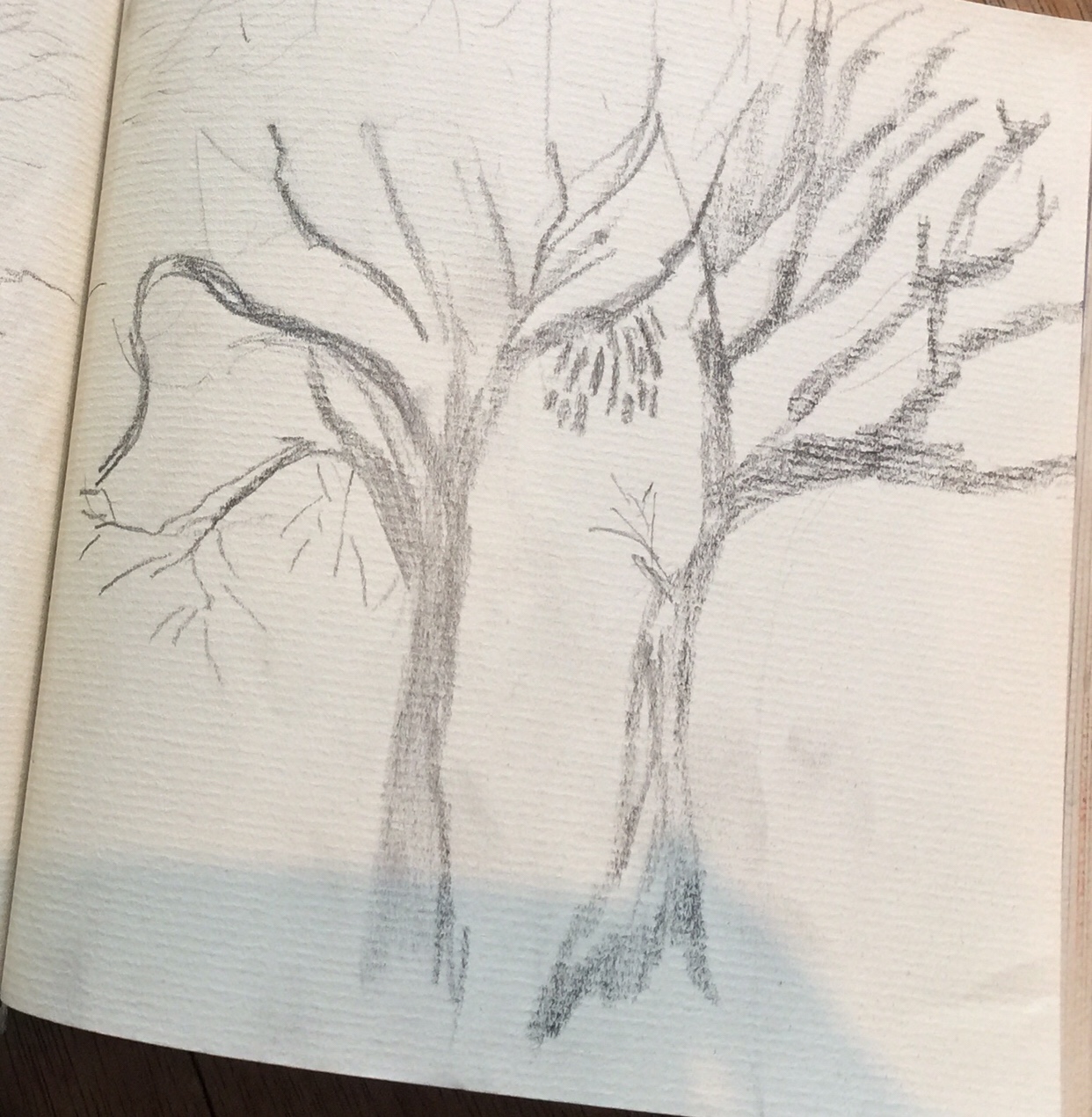 Main branches of the tree and outline of the trunk
Main branches of the tree and outline of the trunk
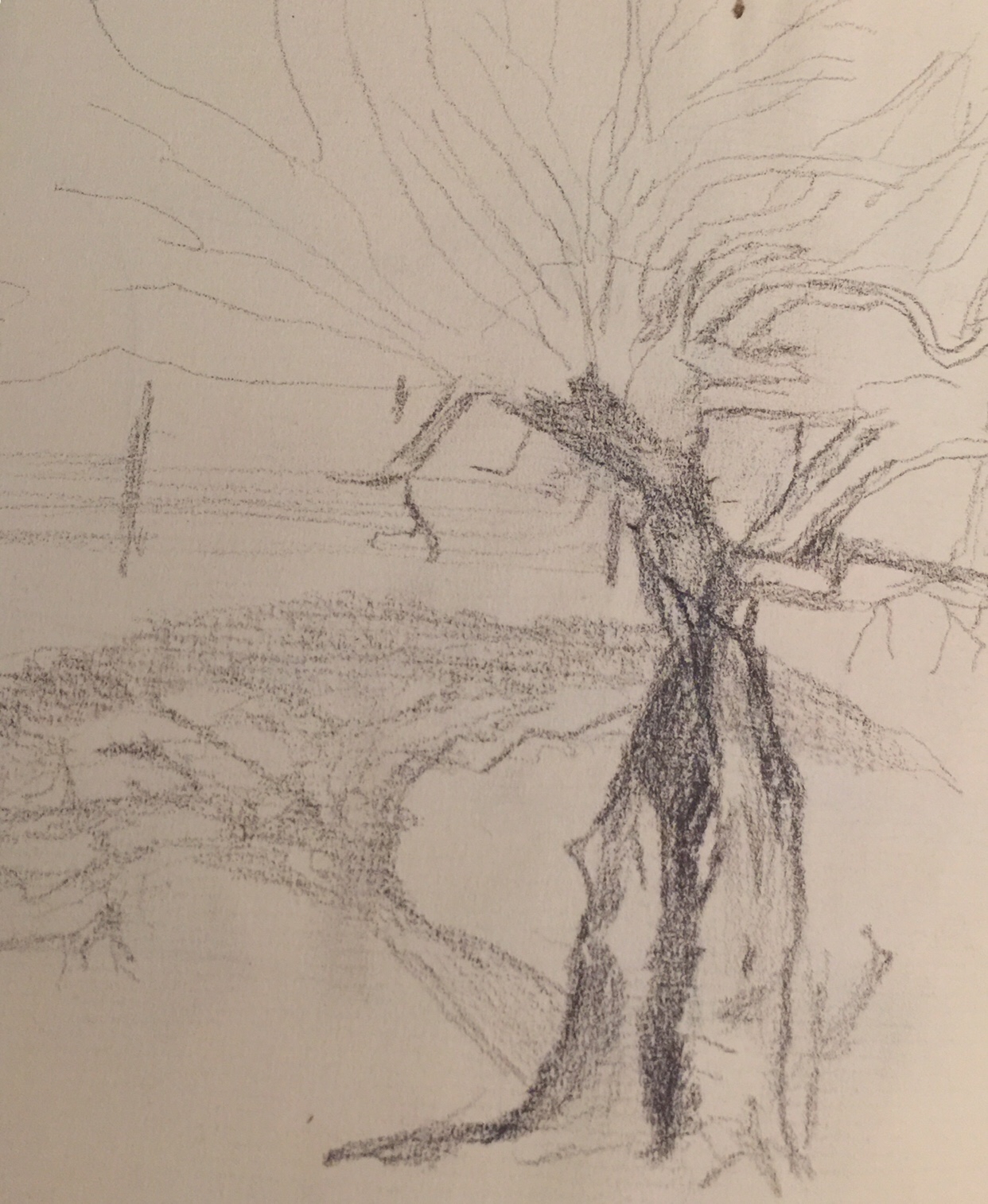
The shadows, shades areas and shape.
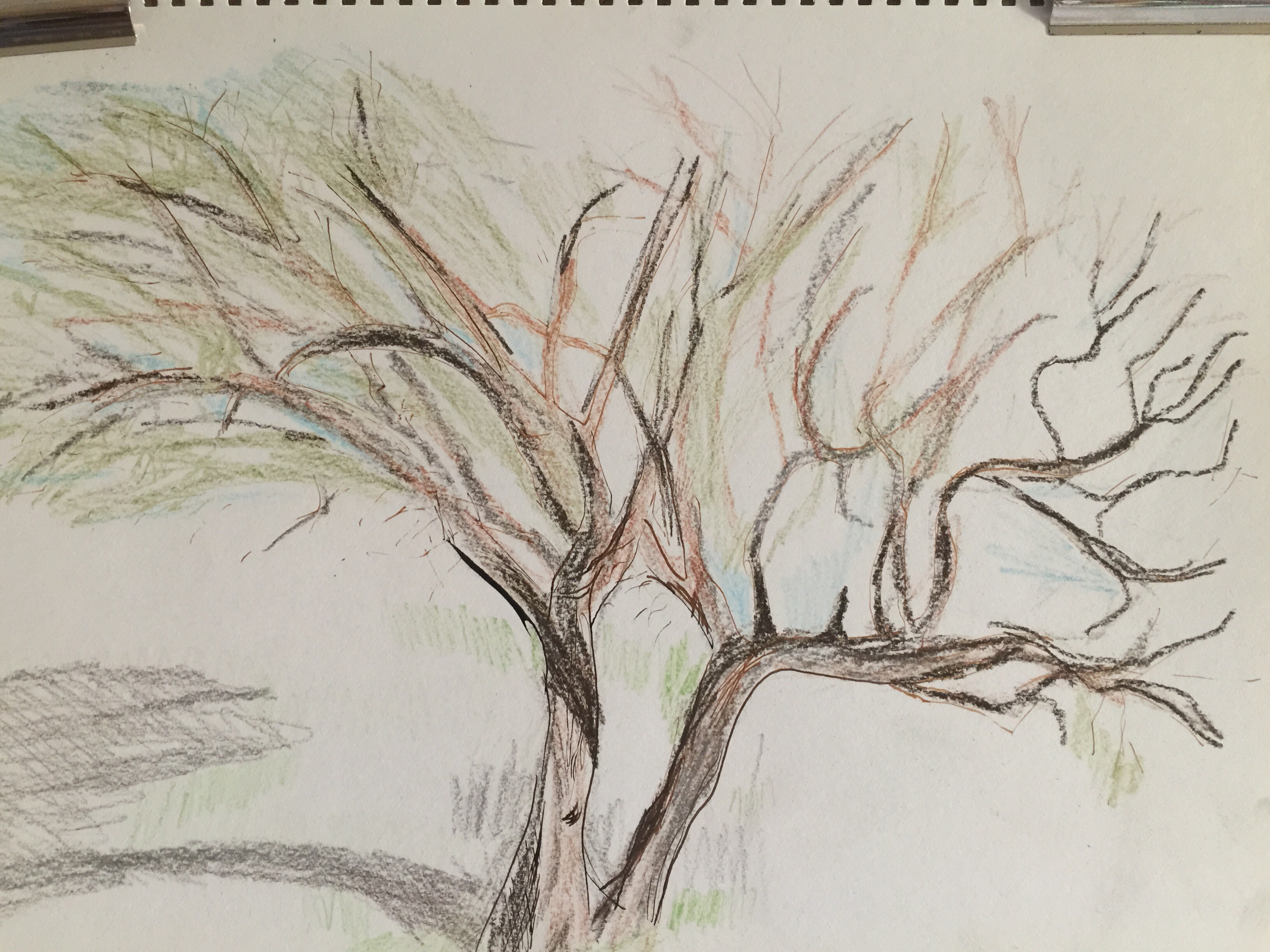
Foliage and texture with ink and coloured pencils.


I did not use a viewfinder to frame and help compose the landscape, but decided to use my hands for this purpose. I also had my cellular phone/camera to use to compose.
Exercise 2 Larger observational study of an individual tree
Use A3 paper and a fine drawing medium to look at a tree in detail.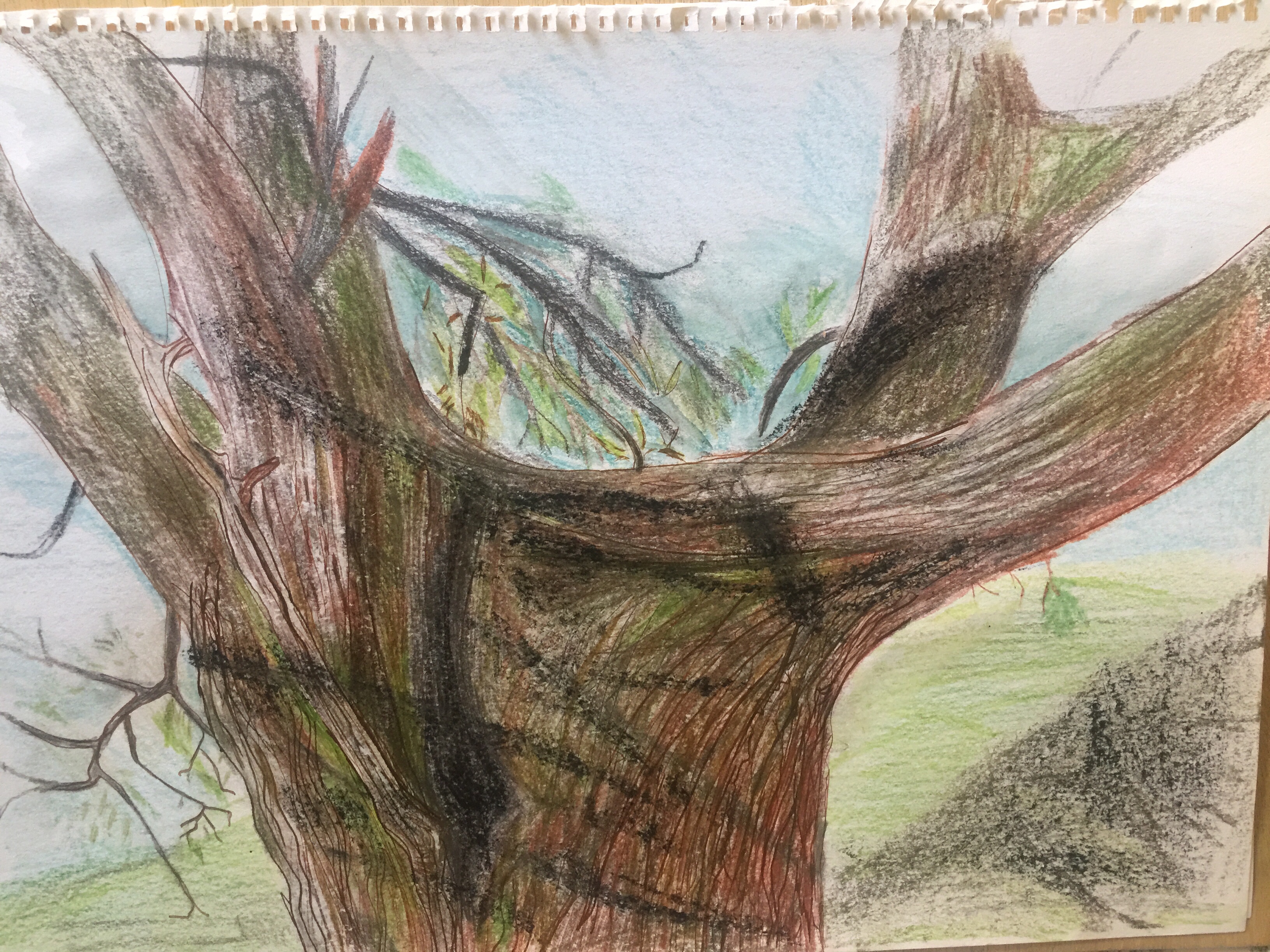
The sun made lovely shadows over the Olive tree. I do not think my lines are very convincing – the charcoal medium did not blend into the drawing. I tried to keep the focus on this one area of the tree. I read the following“; `” when we have learned how to listen to trees, then the brevity and the quickness and the childlike hastiness of our thoughts achieve an incomparable joy” Herman Hesse

I love this dead Leadwood tree. I started off the drawing with a black Liqui Liner, added white chalk pencil and my Speedball fountain pen. a leadwood tree has so much character, it also being an indigenous and protected hardwood tree in South Africa. I had the opportunity to spend time with a Rhino anti poaching team and could also be near these lovely pale grey trees in the veld. The bark is covered with dark brown scales when younger. This tree has cracked scales and deep longitudinal furrows and then the irregular transverse cracks. Their leaves are eaten by giraffe, elephant, kudu, impala, grey duiker and red lechwe.
Exercise 3 Study of several trees
For the last few weeks I have been enjoying the shadows trees in our garden are displaying on the white wall in the later part of the afternoon. This row of 13 trees are planted alongside the wall between our home and that of our neighbours. The grouping of indigenous, Bush Willow Trees are deciduous and the leaves are turning red and yellow at the moment. On the branches, in between the leaves, are little clusters of 4-winged brownish fruit.
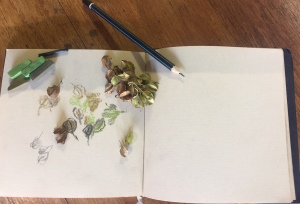
This tree will start flowering in Spring, which will be from September to November. The bark is smooth and greyish – these trees are still young and the trees have no patches or flakes.
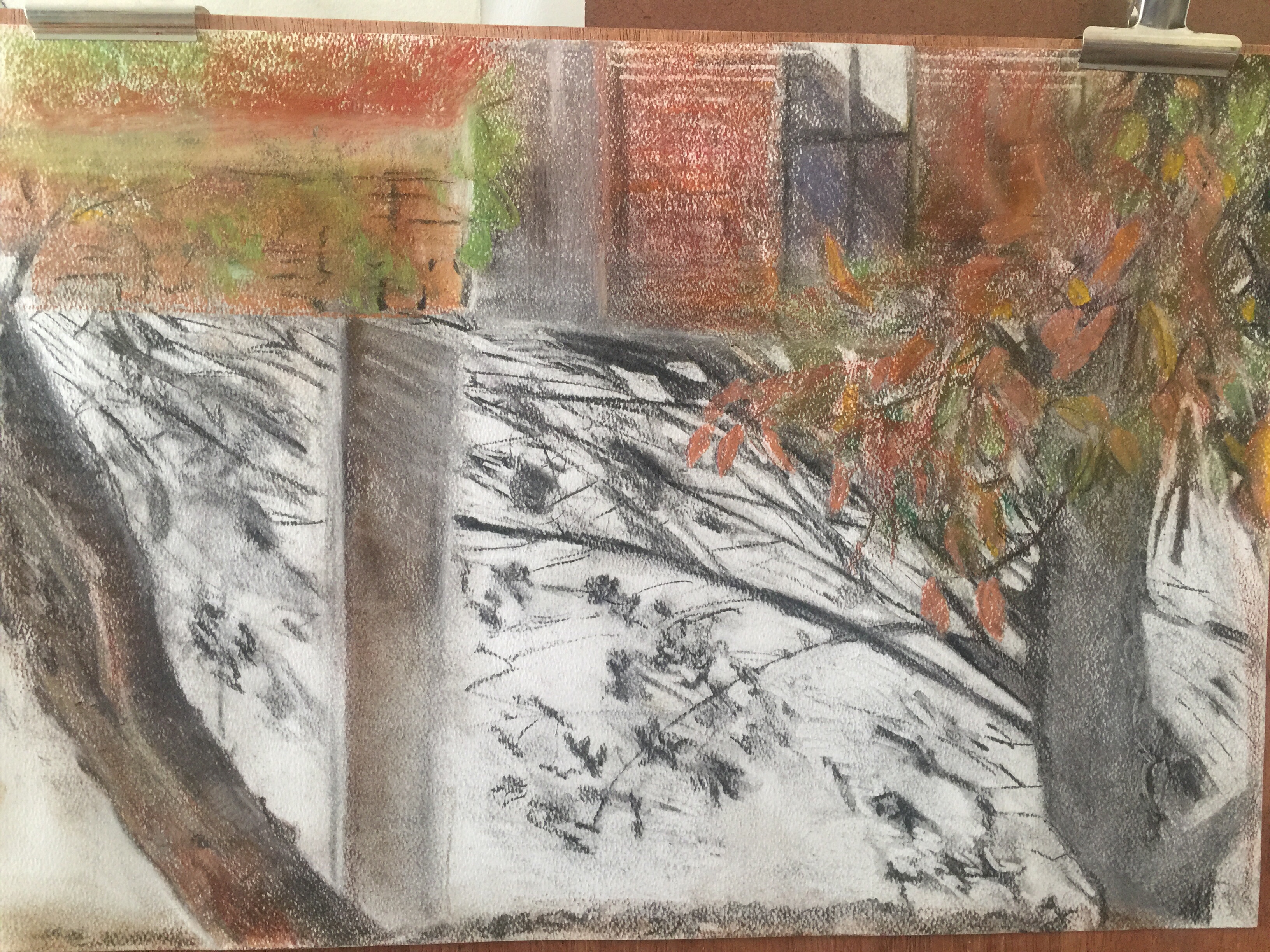
I have sat close to the wall and the shadows was drawn with charcoal – I had to make use of my putty eraser as well as my Derwent mechanical eraser to create the shadows on the paper. I realise the wall cuts the drawing at an awkward eye level and have to also create the illusion of depth for the buildings behind. The tree on the left has some green leaves, where the tree on the right side are in full autumn colours. I opted for a view where the second tree is not shown, but only its shadow, as this is the most striking feature for me of these young trees alongside the wall. The trees have ‘blocked’ us from a view of the neighbours during Spring and Summer, and now the shadows are beautiful reminders of the role these trees play in this part of the garden.
I add pencil drawings I made whilst visiting my kids on the farm in the Western Cape Province of our country. Here the winter rains has started only a few weeks ago and this is a view from the sheep kraals onto a grouping of Eucalyptus trees. I worked on a piece of A3 brown paper and decided to cut the paper in order to change the view to a landscape and focus on the trees in front, although the beautiful mountains at the back fold around this frame, I tried to capture light between the group of trees and used brown ink to create negative space between the trees.

On the drawing below I used pen and made a very quick sketch in my sketchbook of the view from my bedroom over the planted lands of grains. I did two drawings, the one was very early, before the sun came up.

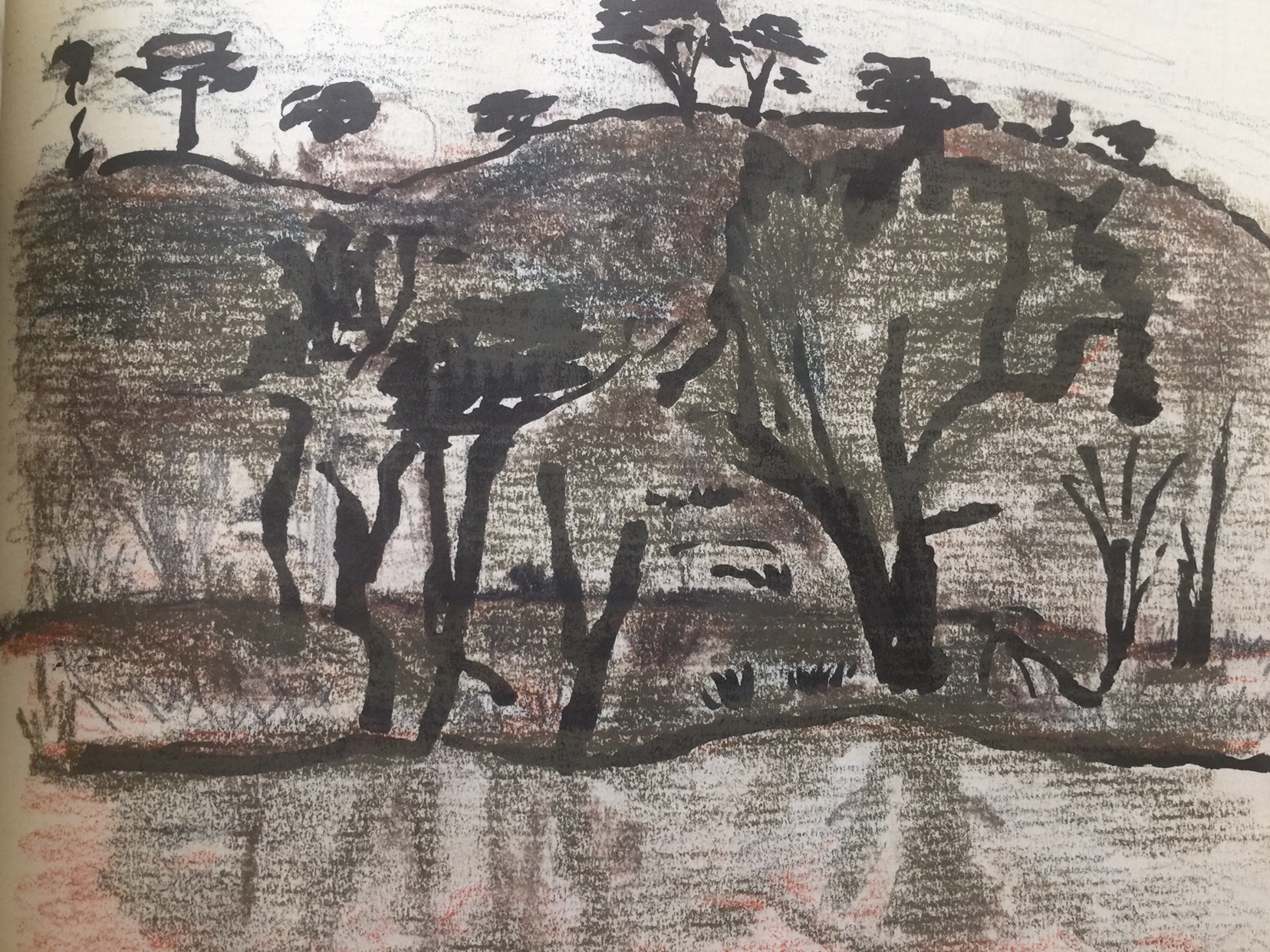
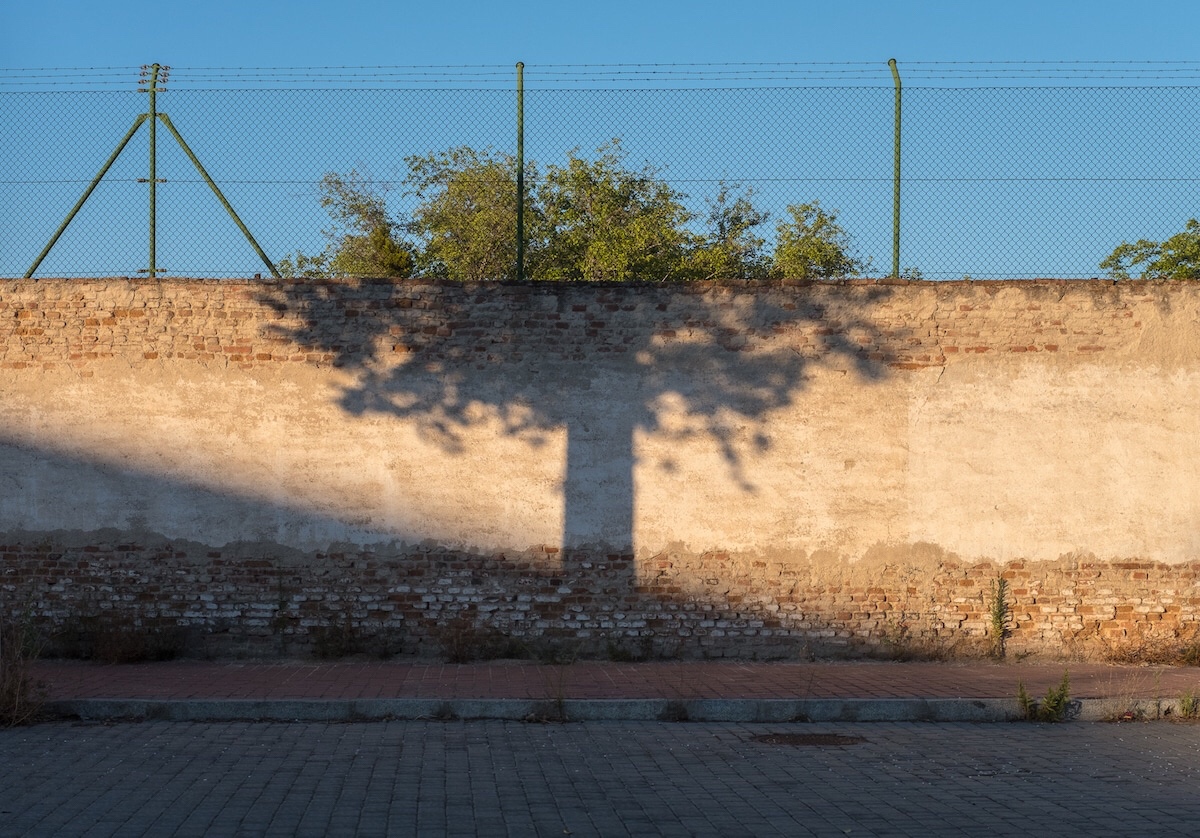 Above: I came upon a photographer, Denis Cherim’s fine art photography series, called Coincidence Project, which started almost 5 years ago. This photographer refined his ability to pick our delightful, curious, and ofter unobserved, for most of us, coincidences that happens around us daily. It made me think about our willingness to want to see our landscape around us.
Above: I came upon a photographer, Denis Cherim’s fine art photography series, called Coincidence Project, which started almost 5 years ago. This photographer refined his ability to pick our delightful, curious, and ofter unobserved, for most of us, coincidences that happens around us daily. It made me think about our willingness to want to see our landscape around us.
During May for the last few years in our city of Johannesburg a Land Art project is followed. Here is a work by Di Wilson, May 2018
